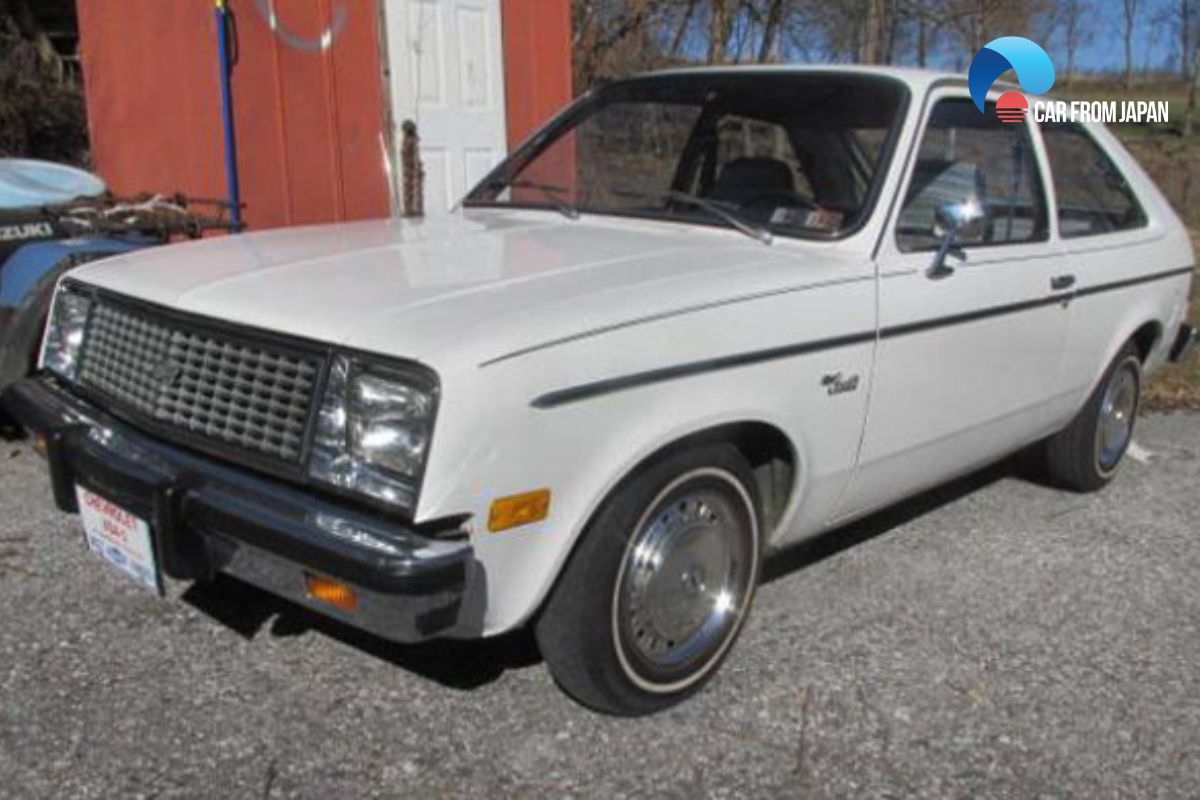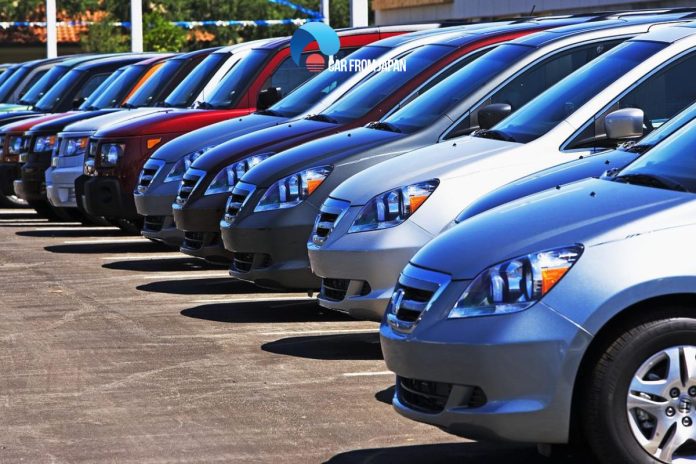Buying a used car can be a very economical option, but to get a vehicle in good working conditions, you need to do your homework. There are various factors to consider, and one major concern is to get something with not too many miles on the odometer.
But what should be good mileage for a used car and how many would be too many? And are there any other important factors that will determine whether a pre-owned vehicle is a worthwhile investment?
It turns out that while you should consider mileage when trying to judge the dependability of a used vehicle, mileage alone cannot by any means provide an accurate picture!
Contents
- Good Mileage For a Used Car: The Guiding Principle
- Other Factors Are No Less Important Too When Buying A Used Car
- FAQs on Good Mileage for a Used Car
- Is 50,000 miles always better than 100,000 miles on a used car?
- Does good mileage mean the same thing for all types of vehicles?
- Is there such a thing as “too new with high mileage”?
- Can mileage be more important than service records when buying used?
- Do electric vehicles follow the same mileage rules as gas cars?
- Good Mileage for a Used Car: The Bottom Line
Good Mileage For a Used Car: The Guiding Principle
What is good mileage for a used car? In general, the answer is what you should have expected. “It depends.”
That said, although mileage will vary between vehicles, a rule of thumb to serve as a general guideline for your evaluation is that on average, a vehicle is driven around 12,000 miles a year.
That means you can expect a 10-year-old used car to have something around 120,000 miles on the odometer.
That is the average number, thus a somewhat “good mileage for a used car” as prospective buyers would phrase. Something more wouldn’t necessarily make the vehicle scrap.
It’s just that anything that’s a lot higher or lower than this level would require closer attention, that is you must enquire about other important factors to accurately judge whether such a car would be worthwhile to purchase.
The 120,000 miles per year figure is only a basis so you’ll know when to pay extra attention to other factors.
In fact, it’s not uncommon that many second-hand cars with higher mileage have a more dependable performance and longer serviceable life than others with less miles on them.
When you’re comparing two cars with the same year, make, and model, it’s too easy to assume that the one with only 80,000 miles on it would be more of a catch than the other with 200,000 miles, since the gap in mileage is that large.
But you will see after the examples further below that mileage alone can be quite misleading when judging the value of a pre-owned vehicle, and high-mileage cars and low-mileage ones are not necessarily polar opposites.
Other factors that you need to consider to have a clear picture of the condition of a used car are as follows.

Read More: What To Do After Buying A Used Car From A Dealer?
Other Factors Are No Less Important Too When Buying A Used Car
Age and How It Was Driven
If all else being equal, then of course a car with the least mileage would be a better deal, but in most cases you would have to evaluate cars that are different in all aspects.
So the first factor that can tell alot about the working condition of a second-hand vehicle is its age.
And that includes both the years it’s actually been put on the road and the years since it left the factory, since there are many cars that serve as secondary/collectible vehicles that have been predominantly sitting in a garage for many years without much driving.
For example, you might be comparing two vehicles, one is older but has fewer miles, and the other has less years but more miles on it.
The older, low mileage vehicle was most likely used on local roads for shorter commutes and quick errands in stop-and-go traffic. Typically, this type of driving would indicate more wear and tear on the tires and brake as well as under the hood.
Meanwhile, the newer, high mileage car would most likely have been used more for highway driving.
Compared to stop-and-go driving, cruising down the freeway typically causes less wear and tear on tires and brakes and takes less of a toll on the most important performance parts.
Therefore, in general, a vehicle used mostly for highway driving would have less issues and more likely to last longer than a vehicle mostly driven in stop-and-go traffic.
For example, if you come across a two-year-old vehicle that has 55,000 miles on it, which is more than double the benchmark of 12,000 miles per year, but most of those miles were highway driving, do not pass it up right away.
For one, it’s very young in age, and if the owner can provide a record of regular maintenance, then it’s quite a great deal.
Read More: How To Tell If A Used Car Has Been In An Accident?
Maintenance (Service History and VIN check)
We mentioned service records above, and it’s indeed a deciding factor when shopping for used vehicles.
Regardless of how old a vehicle is and how many miles it has, the best way to get a reliable car that will stay strong for many years to come is to check whether the previous owner took proper and regular care of that vehicle.
Just like us, cars need regular health checkups and repairs or maintenance to stay in good working condition, both inside and out. And you need the records for service history as proof for that.
The best deal you can get is a second-hand car that has been serviced at important milestones throughout its life, that is approximately at 3,000 miles, 6,000 miles, 12,000 miles, 15,000 miles, 30,000 miles, 45,000 miles, 60,000 miles and 100,000 miles.
Together with the service record, you must always ask for the VIN of the vehicle to run a VIN check, or a vehicle history report.
In addition to all the maintenance jobs done and other reported services, the VIN check will tell you if the vehicle has been in any accident, the degree of damages sustained and if there were any factory defects.
So even if a car has less mileage than the 12,000 miles/year benchmark, you might end up paying a lot for repairs if the vehicle didn’t get the routine services it required.
What It Was Used For
What a car was used for is related to the factor of “how it was driven” above (highway vs stop-and-go driving), however there are other things of importance here.
First off, you should consider used rental cars when shopping around. Sure, these cars typically have a lot of miles on them, but they usually have lower bid price range.
Plus, most rental cars are newer model years and due to their commercial purpose, they are usually well-maintained.
In addition, cars previously owned by travelling sales representatives and real estate agents are typically kept in good repair regarding both appearance and performance, and most of the miles should be highway miles, considering the nature of the business.
So as long as the service records and VIN check look decent, these kinds of vehicles can give you the best value on a used car market.
The third type of used car that you should check out, even if the car is quite old, is the single-owner “granny” car.
You will come across those that are more than ten years in age, but most of those times the vehicle was sitting in the garage as a beautiful secondary vehicle or a collectible for casual drives only.

It’s not uncommon to find a few with less than 3,000 miles per year on them. Cars like these make awesome deals, since they are often meticulously cleaned and maintained, with some still looking brand new after a decade.
Just note that even with minimal driving, old age would still cause concerns like dry-rot, dried-out oil seals, deteriorated tires and weakened battery, but all of these can be easily repaired without breaking the bank.
The Number of Previous Owners
You might have noticed that the good examples above are “single-owner”. Yes, in general, if a car has been owned by only one previous owner, then you can get the service records for it.
But if a car has been passed on by several owners, it’s very hard or impossible to find maintenance records for it.
It’s not uncommon to sell a car when the owner realizes that it costs too much time and money to repair a car now, after neglecting it for so long, and these are troublesome vehicles that you should steer clear from.
So a ten-year-old car that has only 80,000 miles (that is three quarters of our benchmark), but has four previous owners might actually be ready for scrap.
Where The Car Was Used
Lastly, this might not be as important as the factors above, but is useful when you’re comparing cars that are comparable in many aspects.
If two cars both have around 20,000 miles after 2 years, and owned by a single owner, then the one that spent its life in North Carolina is more likely than not to be healthier than the other one that came from Chicago.
Chicago has a very harsh winter with many months of snow, which can adversely affect the health of a car, even if it is parked in a garage instead of outdoors in the snow.
Having said that, not every owner has a garage to keep their car, and a used car that has mostly been left out in the elements wouldn’t last as long as the one kept in a garage (especially a heated garage in the cruelest winter months).
Also, a car driven in the city would differ from one driven in the country, all else being equal.
FAQs on Good Mileage for a Used Car
Is 50,000 miles always better than 100,000 miles on a used car?
Not necessarily. A well-maintained 100,000-mile highway-driven car can be in far better shape than a 50,000-mile city-driven vehicle with poor service history.
Does good mileage mean the same thing for all types of vehicles?
No. Trucks, hybrids, luxury cars, and diesels have different expected lifespans.
For example, a diesel pickup with 120,000 miles might just be getting started.
Is there such a thing as “too new with high mileage”?
Yes. A 2-year-old car with 80,000 miles might indicate it was a fleet or rental vehicle, which can mean more wear-and-tear than normal.
Can mileage be more important than service records when buying used?
Not always. A car with 130,000 miles and a full dealer maintenance history may be more reliable than one with 60,000 miles and zero records.
Do electric vehicles follow the same mileage rules as gas cars?
Not exactly. EV motors wear differently, and battery health (cycle count, charging habits) is more important than odometer readings alone.
Good Mileage for a Used Car: The Bottom Line
For a good mileage for a used car, while something significantly more than 12,000 miles per year might not be very attractive, do not pass them up immediately.
Now that you have read this article, there’s no reason to shy away from cars that are above this range, as long as the car you’re having your eyes on has been properly cared for, with service records as proof.
If you’re comparing a few options with comparable mileage and good maintenance, pick the newer one that only has one previous owner, kept in a garage and had more highway miles than stop-and-go miles.



